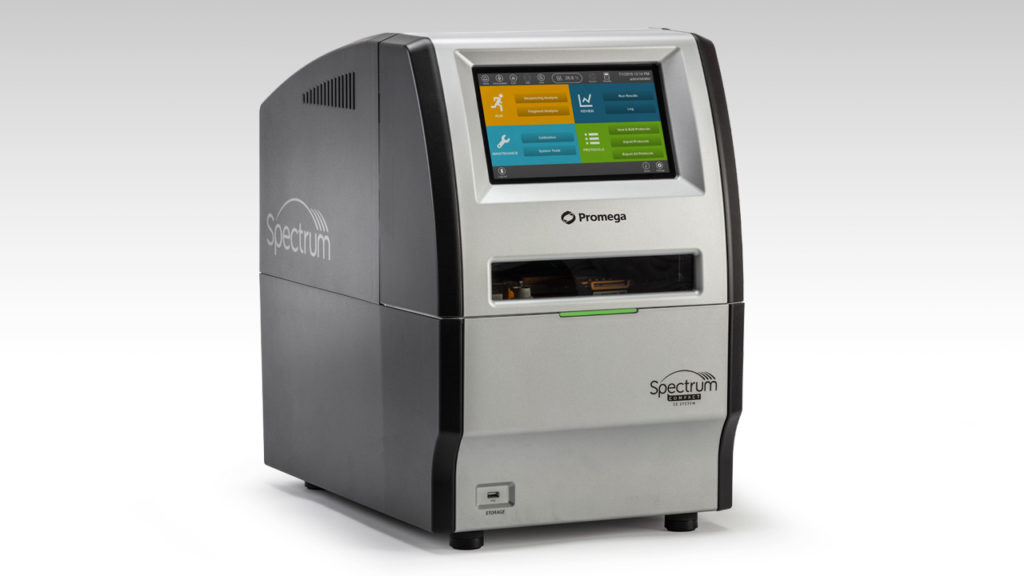
Here’s the good news: The Spectrum Compact CE System is now available from Promega.
Here’s the better news: Labs of all sizes now have the opportunity to perform Sanger sequencing and fragment analysis with a personal, benchtop instrument.
There is no bad news.
Capillary electrophoresis instruments are often too big or expensive for labs that only need to process a handful of samples. The Spectrum Compact CE system fits on your benchtop and easily fits into your workflow with flexible run scheduling and small batch sizes. With an integrated touchscreen and easy-to-use interface, the instrument is easily accessible to anyone in the lab.
What Is Capillary Electrophoresis?
Capillary electrophoresis (CE) is a technique to separate and detect fragments of nucleic acid.
First, DNA fragments are labeled with fluorescent dyes. Each color represents the last base of the fragment. These samples are moved into an array of thin capillaries by an electric current. When the ends of the capillary array are placed into a cathode buffer and anode buffer, the resulting voltage causes the DNA fragments to migrate through the capillaries. The fragments migrate at different speeds based on their size, with the smallest fragments moving fastest.
When the DNA fragments reach the detection window, the dyes are excited by a laser. The collection software then records the migration time and dye color as a peak. The resulting electropherogram provides information about the sequence and size of the fragments.
Learn more about capillary electrophoresis in this animation.
How Is Capillary Electrophoresis Relevant To My Research?
Sanger sequencing has been the gold standard of sequencing for over 40 years. To begin, a piece of DNA is amplified with fluorescently labeled dideoxynucleotides. The amplification reaction produces fragments of every length, and the color of the attached dye corresponds to the last base added to that fragment. When the fragments are separated, the order of dyes reveals the sequence of nucleic acids in the original sample. In the age of next-gen sequencing, Sanger sequencing is often used to confirm the results of NGS. It can also be an efficient alternative for anyone processing a small number of samples.
Another common CE application is cell line authentication. A misidentified cell line can ruin experiments or invalidate data, so it’s important to validate your cell lines early in your project. The best way to validate a cell line is through STR profiling.
Short tandem repeats, or STRs, are sites within the genome that have a variable number of repeats. A specific cell line will have a unique number of repeats at each site, and a collection of these sites can reveal a sort of “fingerprint” of the genome.
To analyze these STRs, the sample is first amplified using primers for a specific set of markers and labeled with fluorescent dyes. The resulting fragments are then separated by capillary electrophoresis. The size of each fragment will correspond to the number of repeats that are present at each marker. This data will be used to assemble the “fingerprint” of the sample, which can then be compared with known samples to identify the cell line. To see how Promega scientists used the Spectrum Compact CE System to validate cell lines, click here.
What is the Spectrum Compact CE System?
The Spectrum Compact CE System is a 4-capillary benchtop CE instrument that gives you total control over your workflow. It processes up to 32 samples in a single run and comes with pre-loaded protocols for commercially available STR kits. Separate plug-and-play consumables with 2D barcode gracking help you make the decision on when to replace each one.
On-site installation and operational training are included with purchase of the instrument, and Promega scientists are available to help with validation, applications training and preventive maintenance.
To learn more about the Spectrum Compact CE System, click here.
